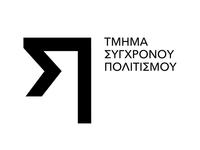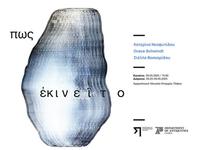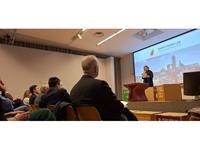Press Releases

04-04-2025 21:04
Address by the Deputy Ministry of Culture of the Republic of Cyprus, Dr Vasiliki Kassianidou, at the inauguration of “ΤEKTON” exhibition, by PSI Foundation, in Lemesos
It was with great pleasure that I accepted the kind invitation of the PSI Foundation to address the opening of the “TEKTON” research-monograph exhibition. The exhibition highlights the creative achievements of architect Phivos Polydorides and civil engineer Andreas Papadopoulos, who often worked together as a team. Perhaps one of their finest collaborative projects is the Carob Warehouse of Limassol where we are today. The building is admittedly impressive, even today, but also it is important because of the fact that for its time, it was innovative and technically groundbreaking.
Andreas Papadopoulos, who studied at the National Technical University of Athens, took an active part in the national liberation struggle of EOKA 1955-59, spending three years in prison as a political prisoner. After independence, he served public affairs with dedication and consistency. He was elected as a Member of Parliament for Lemesos during the very first parliamentary elections held in Cyprus in 1960. Shortly thereafter, Archbishop Makarios III appointed him to the position of Minister of Communications and Works of the newly established Republic of Cyprus. In other words, he was the first Minister of Communications and Works.
Phivos Polydorides studied at the Faculty of Architecture of the University of Geneva from 1947 to 1953. Together with Andreas Papadopoulos, he founded, in 1954, the technical office “TEKTON”, the name of which gives the title of the exhibition we are inaugurating today. One of the most important representatives of Cypriot Modernism, Polydorides designed some of the most emblematic buildings of that period, such as the block of flats “Aktaia” on the Yermasogeia seafront and, of course, the Carob Warehouse.
In the 1960s, architecture in Cyprus, both in the public and private spheres, embraced the international Modernism movement to embody the optimism that characterised the society of the newly established state. It was also a venue through which a rupture with the colonial past could be achieved, and the beginning of this new era could be marked.
Using the work of the duo Polydorides-Papadopoulos as a vehicle, the “TEKTON” exhibition succeeds in summarising vividly the achievements of Cypriot Modernism and demonstrating the contribution of Architecture to the formation of the physiognomy of modern Cyprus and its path towards evolution and progress.
For this is what Modernism signifies as an attitude in life. It is orientated towards the future. The profound approach which runs through the Tekton report cannot therefore fail to address the future. This role is achieved by the work “Aftermath” of British artist Matt Collishaw, which is organically integrated not only in the area of the Carob Warehouse, but also in the wider research and thematic context of the exhibition.
Enlisting Artificial Intelligence (AI) applications, Collishaw's work provides an innovative look at the ongoing dialogue between the old and the new.
Ladies and gentlemen,
Dear friends,
The non-profit organisation PSI Foundation introduced to us this magnificent space as the venue of the group exhibition “Casts of an Island”, which was inspired by the 50th anniversary of the Turkish invasion. Through its second project, the research-monograph exhibition “TEKTON”, the PSI Foundation is demonstrating how it is becoming a key cell of Cyprus’ ecosystem of visual arts, as well as a significant sponsor of the arts.
I would like to take this opportunity to thank the foundation for their support of the Cyprus participation in the Venice Art Biennale last year. Your contribution was crucial for the success of the exhibition of the Cypriot pavilion. Thank you very much.
With these thoughts, I warmly congratulate the two curators of the exhibition we are opening today, Dimitri Ozerkov, Chief Curator of the PSI Foundation, and Danila Parniouk, Artistic Director of the Foundation. Thanks to their thorough research, our knowledge about the historical course of architecture in Cyprus is enriched, as is our appreciation for the architects and their creations.
This is another important contribution of this exhibition, especially at this time when we often see examples of buildings, which are a product of Cypriot modernism, being torn down and not being protected as examples of our most recent cultural heritage.
Thank you.
(EK/GS)
Relevant Press Releases

28-03-2025 18:12
European Statistics Competition, National Phase


26-03-2025 14:03
The National Struggle Museum will remain open on 1st April 2025




